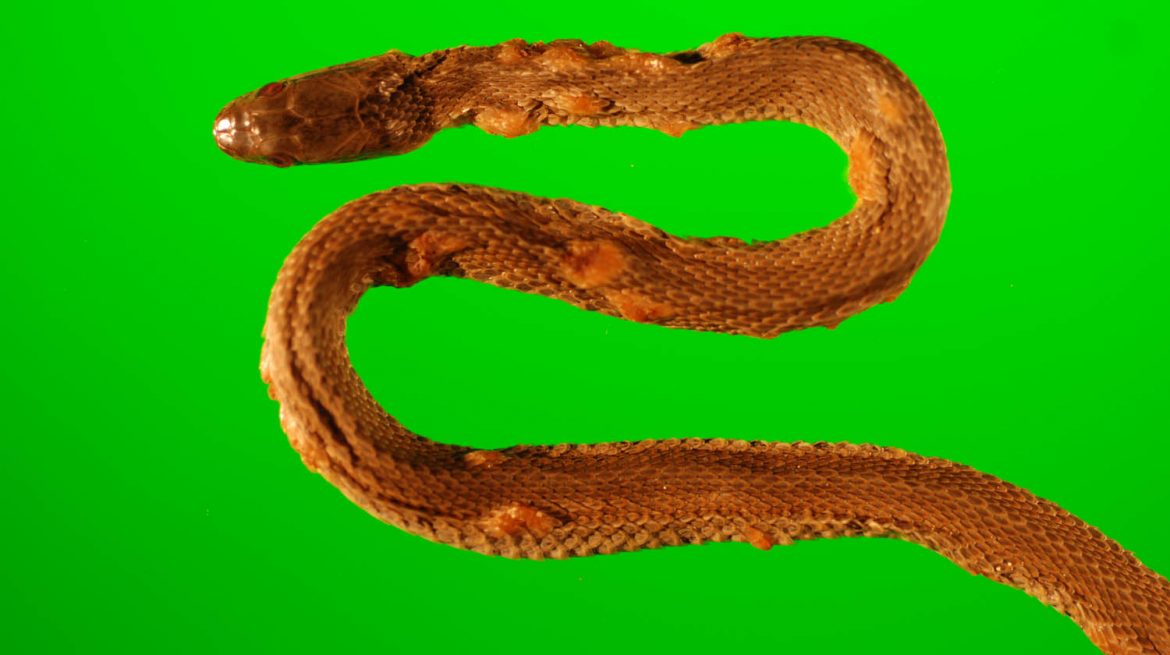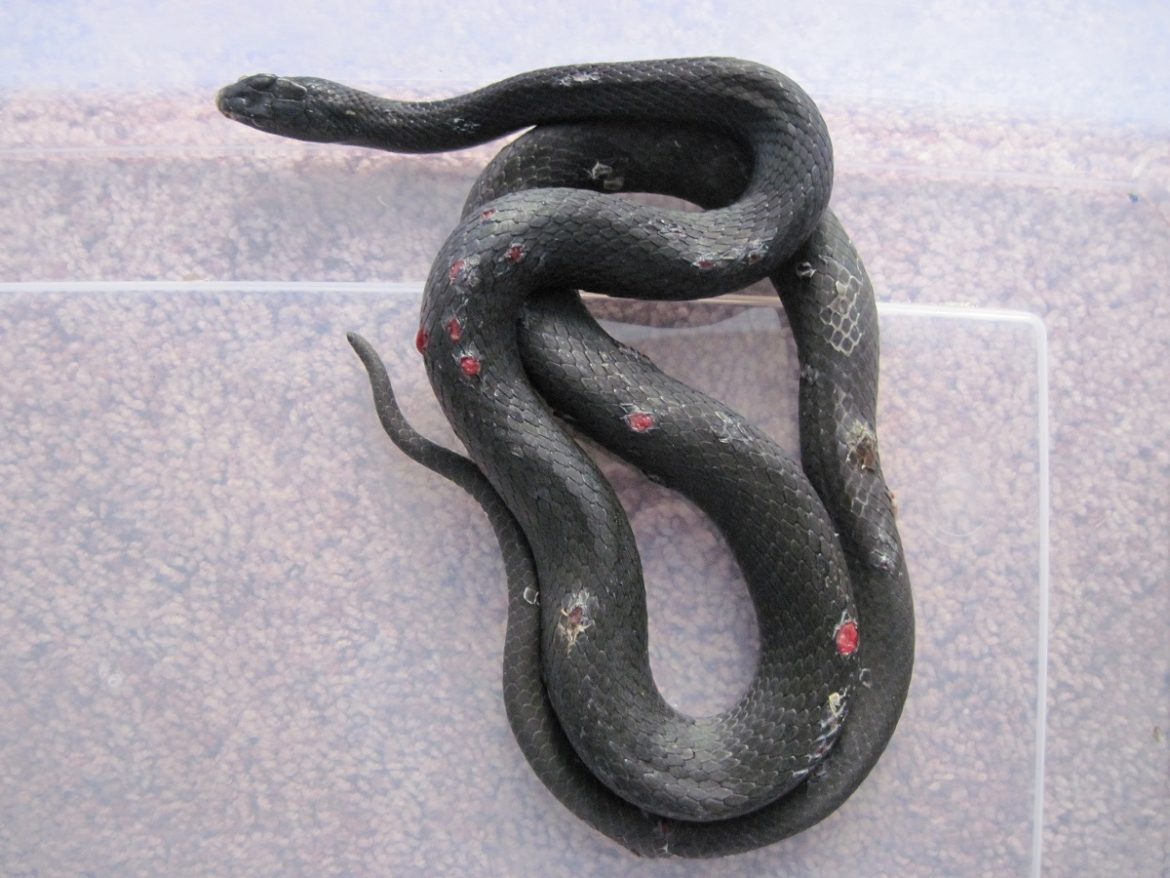https://www.google.com/url?rct=j&sa=t&url=http://greatlakesecho.org/2016/11/28/fungus-that-attacks-snakes-spreads-to-wisconsin-minnesota/&ct=ga&cd=CAEYACoTNzk2NTg0MzM4MDQyMTMzNDU2ODIaYWJiMmMxNTM2YWY2YWQ1Mzpjb206ZW46VVM&usg=AFQjCNENaTn4t1aMII0auv90MFBnefOGjg



Even snakes in the wild can recover. The population of New Hampshire timber rattlesnakes has since rebounded. According to Michell, there have been no signs of infection since the initial outbreak.
Fungus that attacks snakes spreads to Wisconsin, Minnesota
|
A racer in rehabilitation, post-shedding. Image:
Kathy Michell
Kathy Michell

A northern water snake with symptoms of snake
fungal disease. Image: D.E. Green/USGS National
Wildlife Health Center
fungal disease. Image: D.E. Green/USGS National
Wildlife Health Center
By Kate Habrel
Snakes in Wisconsin and Minnesota may be at risk for a fungal disease previously found only in the eastern U.S.
Researchers recently confirmed the disease’s presence in those two states. Elsewhere in the Great Lakes region it has been confirmed in Illinois, Ohio and New York.
The disease is caused by a fungus called Ophidiomyces ophiodiicola – a long name for a small spore. Though it is naturally found on the skin of healthy snakes, it can cause severe infections if it gets into lesions or sores.
More than 30 species of snakes are susceptible to the fungus, said Jeff Lorch, a microbiologist working for the U.S. Geological Survey. The disease has been found in captive snakes for all families in the eastern U.S.

An eastern rat snake with an infected eye and snout.
Image: D.E. Green/USGS National Wildlife Health
Center
Image: D.E. Green/USGS National Wildlife Health
Center
“At this point,” Lorch said, “there’s no indication that a given species is resistant or not susceptible.”
The disease causes crusty scabs on the surface of the snake’s skin. It concentrates mostly around the head and eyes. In mild cases, only a small group of scales becomes infected. This might take the form of a blister or lesion. The snake will shed, and the infection will seem to vanish.
In more severe cases, lesions continue to grow, often spreading to the head.
“It’s unable to see because it’s got so many layers of skin over the eyes and crusted around the eyes,” said Kathy Michell, a wildlife biologist and rehabilitator in New York who specializes in snakes, eagles and turtles. “They can’t sense their prey, and their mouth gets all encrusted. They basically can’t see or eat.”
Snakes typically shed once or twice per year. To get rid of the fungus, severely infected snakes will shed as frequently as once every three weeks. Sometimes the infection will seem to go away, but reappear by the next shed cycle, Michell said.
Snake fungal disease first gained attention in 2006 when a population of timber rattlesnakes in New Hampshire declined by about 50 percent, according to the Journal of the American Veterinary Medical Association. The drop was at least partially caused by the disease. At around the same time, the infections were also noticed in eastern massasauga rattlesnakes in Illinois.
Researchers observed snakes emerging from their dens in the spring with sores on their skin. These hibernation sores were the first subtle signs of the disease.
Some experts drew comparisons to white-nose syndrome, another fungal disease that is found in bats.
“There’s a very lucrative trade industry with snakes being collected in the wild and brought to different parts of the world,” Lorch said. “So a lot of people thought, maybe this spilled over from captive snakes into the wild snakes.”
While many species of snakes are susceptible, the disease is not 100 percent fatal. With proper treatment and rehabilitation, the majority can recover, said Michell.

An infected rat snake upon arrival to rehabilitation.
Image: Kathy Michell
Image: Kathy Michell
Even snakes in the wild can recover. The population of New Hampshire timber rattlesnakes has since rebounded. According to Michell, there have been no signs of infection since the initial outbreak.
A lot is not yet known about snake fungal disease and its spread. Since most snakes crawl underground to die, it’s difficult to measure populations and fatalities.
Michell encourages people to report the disease to their state wildlife agency or local DNR office if they come across an infected snake. The date, location and symptoms should be included in the report.












No comments:
Post a Comment